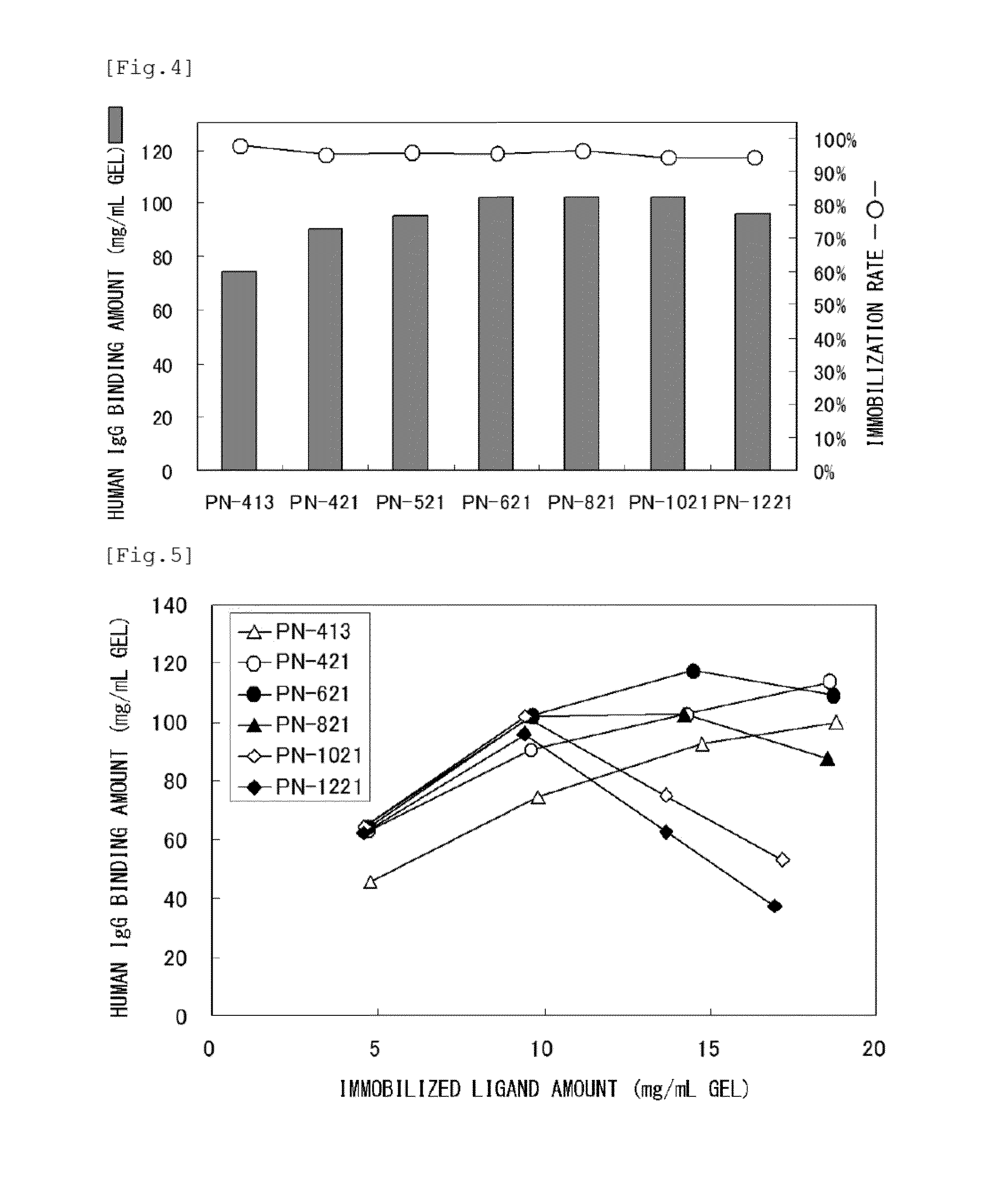Multimeric immunoglobulin-binding domain
a multi-immunoglobulin and domain technology, applied in the field of proteins, can solve the problems of not considering multi-merization, not evaluating the multi-mer with regard to its binding capacity, and not evaluating the multi-mer immobilization on a gel support, so as to improve the efficiency of antibody production, prevent the inhibition of immunoglobulin activity, and reduce the cost of antibody production
- Summary
- Abstract
- Description
- Claims
- Application Information
AI Technical Summary
Benefits of technology
Problems solved by technology
Method used
Image
Examples
example 1
Multimer Production Using C Domain of Lysine-Substituted Staphylococcus-Derived Protein A
Design and Construction of Variants
[0087]Variants were designed and constructed using a method based on the method previously established by the present inventors (PTL 1). Specifically, a monomeric protein that can be orientationally immobilized at multiple points was produced by substituting the original lysine residues in a domain of protein A with a non-lysine amino acid only at position 35, or at position 35 and one or more positions in positions 4, 7, and 35, or by additionally substituting 1 to 6 amino acids with lysine at positions 40, 43, 46, 53, 54, and 56 of the third α-helix that is not directly involved in immunoglobulin binding.
[0088]A method that replaces a specific portion of a sequence with a sequence that codes for different amino acids in polymerase chain reaction (PCR) using a DNA fragment that codes for an amino acid sequence of a basic design is commonly practiced in the art...
example 2
Production of Multimer with (R1) Using C Domain Having Substitution of Lysine Residue at Positions 4, 7, and 35
Design and Construction of Modified Multimer
[0104]In Example 1, the C′ domain used as (R1) domain had all of its lysine residues substituted. Example 2 focused on the lysine residues at positions 4, 7, and 35 out of the seven lysine residues originally present in the C′ domain, and produced a multimer that contained the (R1) domain for which the C′ domain that had had the substitution of each lysine residue at these three positions with non-lysine amino acids was used. The multimers were then compared for the effect of the substitution on the immunoglobulin-binding activity of the support yielded by immobilization reaction. The following method was used to construct a hexamer in which the substituted C′ domain was used as the repeating unit of five linked (R1) domains, and in which PN-26f was linked as (R2) to the C-terminus.
[0105]The variant was designed and constructed us...
example 3
Production of Multimer Containing (R2) that Uses C Domain Containing Lysine Residues Introduced by Substitution
Design and Construction of Modified Multimer
[0110]By using the method described in Example 1, a hexamer PN-667 was produced that contained (R1) for which a C domain that had had all of its lysine residues substituted with other amino acids was used, and (R2) that contained a total of six lysine residues after the additional substitution of lysine residues at positions 54 and 56 in the (R2) domain of Example 1. For this purpose, a PN-28f was produced by additionally substituting the lysine residues at positions 54 and 56 of the PN-26f used in Example 1. The PN-28f (SEQ ID NO: 9) was disposed at the C-terminus to produce the hexamer PN-667 that contained five linked (R1) domains of PN-95f described in Example 1.
[0111]The lysine residues originally present in positions 4, 7, and 35 of the C domain were substituted with some other amino acid only at position 35, and lysine was ...
PUM
| Property | Measurement | Unit |
|---|---|---|
| Length | aaaaa | aaaaa |
| Affinity | aaaaa | aaaaa |
Abstract
Description
Claims
Application Information
 Login to View More
Login to View More - R&D
- Intellectual Property
- Life Sciences
- Materials
- Tech Scout
- Unparalleled Data Quality
- Higher Quality Content
- 60% Fewer Hallucinations
Browse by: Latest US Patents, China's latest patents, Technical Efficacy Thesaurus, Application Domain, Technology Topic, Popular Technical Reports.
© 2025 PatSnap. All rights reserved.Legal|Privacy policy|Modern Slavery Act Transparency Statement|Sitemap|About US| Contact US: help@patsnap.com



